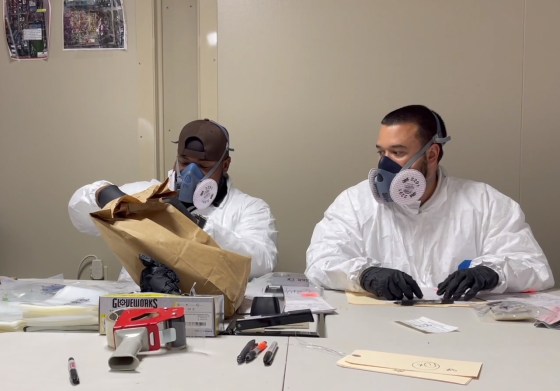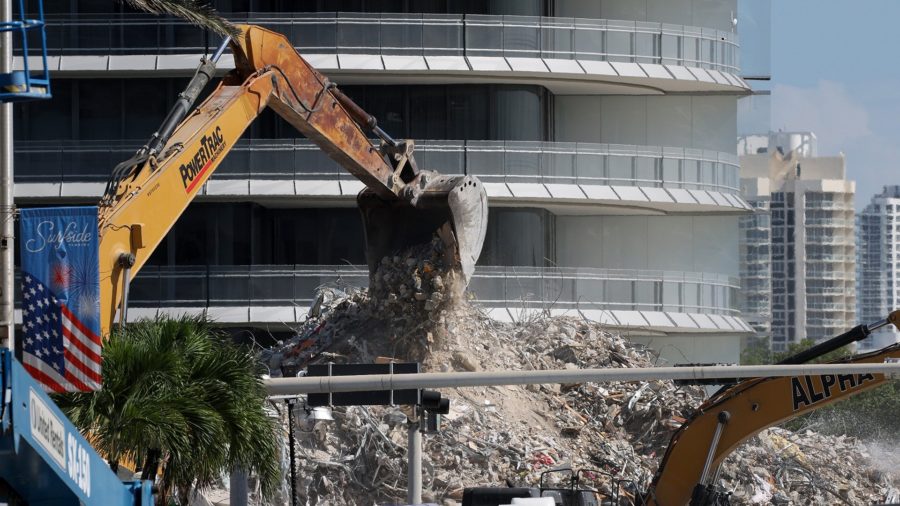Searchers recover Surfside victims’ possessions, but returning them is complicated
“Sometimes you see something that makes you ponder, like when you find a child’s artwork,” a police spokesperson said of the recovery effort.

The following written content by Phil McCausland
SURFSIDE, Fla. — The building that collapsed in Surfside is unrecognizable: What was a high-rise home to many is now a gray pile of concrete and rebar mixed with the occasional flash of residents’ possessions.
While the effort to find the bodies of victims in the deadly collapse is coming to a close, officials said Tuesday, crews continue to recover valuable personal objects from the building’s wreckage.
Onlookers watch from the road as excavators scrape off layers of debris. Meanwhile, searchers slowly dig through and continue to retrieve a myriad of personal items from the site — that they’ve divided into a grid of nine squares — including jewelry, cash, art, firearms and children’s toys.
The question that looms over the entire effort, however, is how they will return those objects to their rightful owners and what legal challenges that could create.
Miami-Dade County Police Sgt. Danny Murillo, who is leading the effort to retrieve possessions, said his team has developed a meticulous process to catalog the items and store them respectfully. The focus of the effort is retrieval, he said; creating a system to return the items will happen later.
“Our main goal is to recover property which has a sentimental and religious value,” Murillo said. “It means making sure that the process was done carefully and meticulously, and we hope eventually to return the property to its rightful owners.”
As of now, all of the property recovered by police is impounded as evidence and taken to a temporary site. Members of Murillo’s team, dressed in protective plastic coveralls, place the objects into evidence bags that they label with as many details as they can, including the numbers of the grids where the items were found. The bags are then heat sealed and placed in boxes. Once each box is filled, it is sealed and placed in a shipping container. Murillo is the only person who has a key to the container.
Because many Jewish people lived in the building and some items are religiously significant, Murillo and other law enforcement officials are coordinating with Rabbi Yossi Harlig, a volunteer police chaplain.
“There are so many religious artifacts — Bibles and Shabbat candles and other items these homes had — that are very important to the Jewish tradition,” Harlig said, noting that even damaged religious items need to be respectfully buried, rather than thrown away. “Just imagine families that lost everything — one of the things they would love to have back and have with them as they continue from generation to generation are these items that they might feel a deep connection to.”
Harlig said he has helped police translate names written in Hebrew inside the covers of some items, such as Bibles. Read more from NBC.





